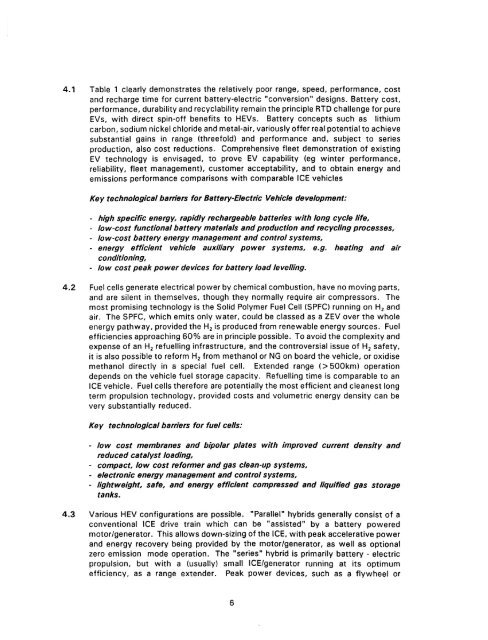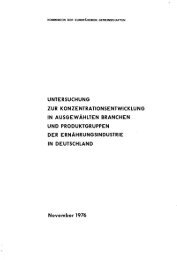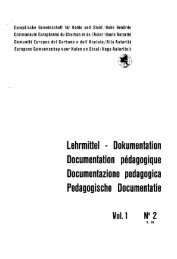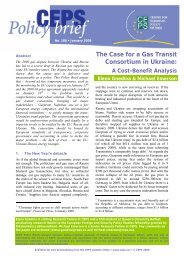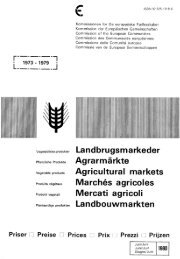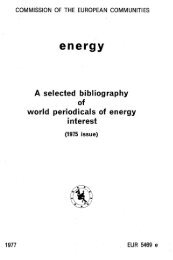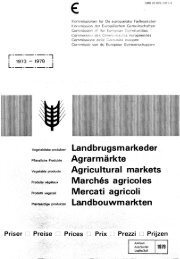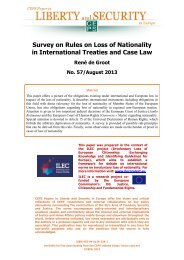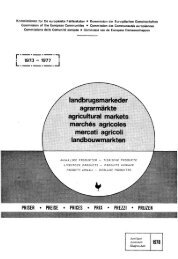Download (1447Kb) - Archive of European Integration
Download (1447Kb) - Archive of European Integration
Download (1447Kb) - Archive of European Integration
Create successful ePaper yourself
Turn your PDF publications into a flip-book with our unique Google optimized e-Paper software.
4.1 Table 1 clearly demonstrates the relatively poor range, speed, performance, cost<br />
and recharge time for current battery-electric "conversion" designs. Battery cost,<br />
performance, durability and recyclability remain the principle RTD challenge for pure<br />
EVs, with direct spin-<strong>of</strong>f benefits to HEVs. Battery concepts such as lithium<br />
carbon, sodium nickel chloride and metal-air, variously <strong>of</strong>fer real potential to achieve<br />
substantial gains in range {threefold) and performance and, subject to series<br />
production, also cost reductions. Comprehensive fleet demonstration <strong>of</strong> existing<br />
EV technology is envisaged, to prove EV capability {eg winter performance,<br />
reliability, fleet management), customer acceptability, and to obtain energy and<br />
emissions performance comparisons with comparable ICE vehicles<br />
Key technological barriers for Battery-Electric Vehicle development:<br />
- high specific energy, rapidly rechargeable batteries with long cycle life,<br />
- /ow-cost functional battery materials and production and recycling processes,<br />
- /ow-cost battery energy management and control systems,<br />
- energy efficient vehicle auxiliary power systems, e.g. heating and air<br />
conditioning,<br />
- low cost peak power devices for battery load levelling.<br />
4.2 Fuel cells generate electrical power by chemical combustion, have no moving parts,<br />
and are silent in themselves, though they normally require air compressors. The<br />
most promising technology is the Solid Polymer Fuel Cell {SPFC) running on H 2 and<br />
air. The SPFC, which emits only water, could be classed as a ZEV over the whole<br />
energy pathway, provided the H 2 is produced from renewable energy sources. Fuel<br />
efficiencies approaching 60% are in principle possible. To avoid the complexity and<br />
expense <strong>of</strong> an H 2 refuelling infrastructure, and the controversial issue <strong>of</strong> H 2 safety,<br />
it is also possible to reform H 2 from methanol or NG on board the vehicle, or oxidise<br />
methanol directly in a special fuel cell. Extended range ( > 500km) operation<br />
depends on the vehicle fuel storage capacity. Refuelling time is comparable to an<br />
ICE vehicle. Fuel cells therefore are potentially the most efficient and cleanest long<br />
term propulsion technology, provided costs and volumetric energy density can be<br />
very substantially reduced.<br />
Key technological barriers for fuel cells:<br />
- low cost membranes and bipolar plates with improved current density and<br />
reduced catalyst loading,<br />
- compact, low cost reformer and gas clean-up systems,<br />
- electronic energy management and control systems,<br />
- lightweight, safe, and energy efficient compressed and liquified gas storage<br />
tanks.<br />
4.3 Various HEV configurations are possible. "Parallel" hybrids generally consist <strong>of</strong> a<br />
conventional ICE drive train which can be "assisted" by a battery powered<br />
motor/generator. This allows down-sizing <strong>of</strong> the ICE, with peak accelerative power<br />
and energy recovery being provided by the motor/generator, as well as optional<br />
zero emission mode operation. The "series" hybrid is primarily battery - electric<br />
propulsion, but with a (usually) small ICE/generator running at its optimum<br />
efficiency, as a range extender. Peak power devices, such as a flywheel or<br />
6


